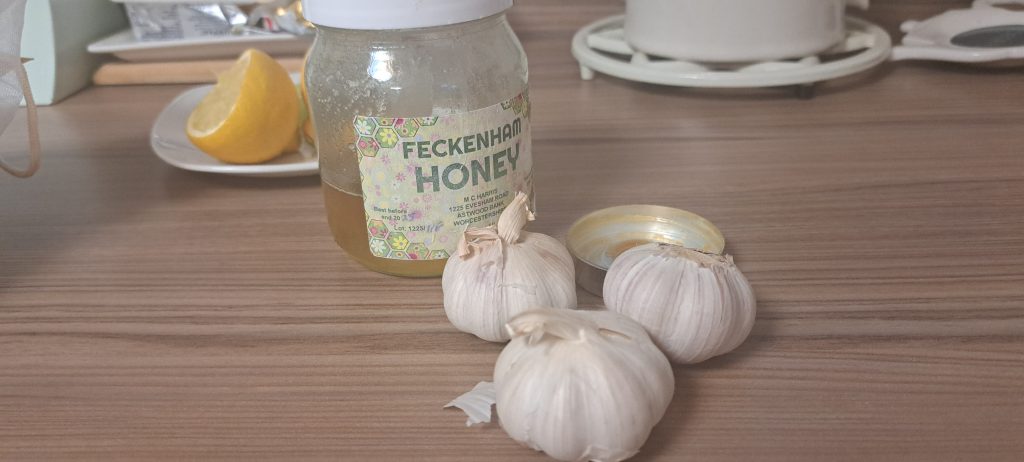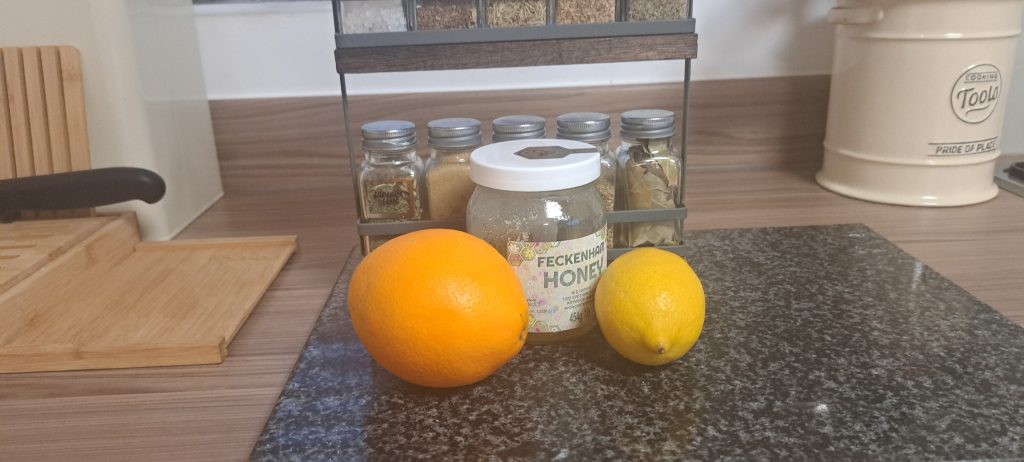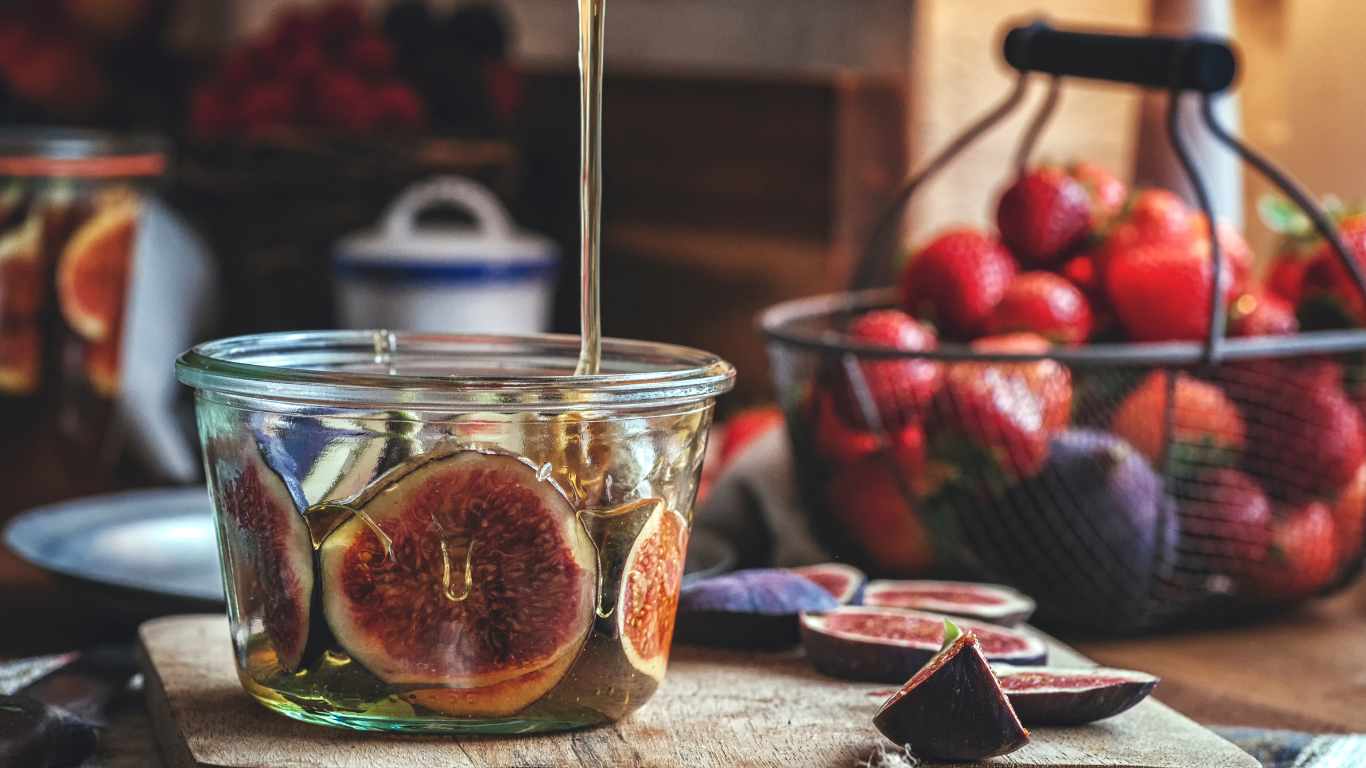Did you know you can use honey for fermentation?
If you heard about this but are not sure what you can ferment in honey, you have landed in the perfect spot!
Honey serves as a potent medium for fermentation, facilitating the cultivation of beneficial microorganisms. Common fermentables include fruits, herbs, and spices. The resulting products, such as mead and honey-infused kombucha, showcase a diverse spectrum of flavours and contribute to a rich historical tradition of honey-based fermentation.
Keep on reading as we are going to discuss honey fermentation in detail!
What Can You Ferment in Honey?
Honey is usually known for its sweetness. Now, imagine it doing more than just making things taste good. It turns out, that honey can team up with fruits, herbs, spices, and even flowers for fermentation.
Take mead, for example. It’s this ancient drink where honey mixes with fruits, creating great flavours. Add in herbs and spices, and it becomes a rich mix of smells and tastes.

But honey doesn’t stop there. It joins the party in honey-infused kombucha – a fizzy drink with a perfect blend of sweetness and tanginess. You can also picture honey soaking into fruits like berries or figs, giving jams a tasty twist.
And then there’s pyment, a honey wine where honey and grape juice come together in a burst of rich flavours. All these outcomes, seen in honey-infused kombucha, pyment, and mead, go beyond just tasting good. The fermentation process brings in friendly microorganisms, adding a possible health boost.
Garlic joins the mix too! Fermenting garlic in honey not only adds a savoury kick but also brings potential health perks. Garlic is known for supporting the immune system, and when combined with honey, it becomes a powerful elixir with both sweet and healthful qualities.

Honey also plays well with chillies, giving you a spicy-sweet kick. Try fermenting ginger in honey for a mix of spicy warmth and sweetness. Mixing turmeric with honey creates a golden blend known for its health benefits.
And let’s not forget about citrus peels—orange or lemon zest in honey for a zesty infusion. Vanilla beans can also join the fermentation journey, giving you a subtly sweet and aromatic honey blend.
This talk about honey-based fermentation is like unfolding a historical story – from ancient mead customs to today’s honey-infused kombucha, pyment, flavourful infusions, and garlic. It shows how honey is more than just a taste. It’s an invite to enjoy a mix of flavours, where tradition and new ideas come together in a simple, yet sophisticated way.
If you would like to learn more on a topic of fermentation, not just in honey, I would recommend you to read my blog which discusses fermentation and if you can truly ferment anything.

How Do You Ferment in Honey?
Fermenting in honey involves combining high-quality raw honey with chosen ingredients, such as fruits, garlic, or herbs, in a clean container. It is important to use raw honey and not pasteurized. Raw honey contains the properties required for fermentation. The ratio of honey to other ingredients depends on your preference and the recipe.
Thoroughly mix the honey and ingredients to distribute flavours and initiate fermentation. Make sure your ingredients are properly covered in honey. At the same time, make sure you have some adequate space between the lid and the honey with ingredients as this is required for successful fermentation. Seal the container and let it ferment at room temperature, monitoring for changes like bubbles, colour shifts, and aroma.
The fermentation time varies, lasting from days to weeks, depending on the room temperature and desired result. Make sure you burp the container periodically to release gases. Taste the mixture to determine if it has achieved the desired flavour.
Once satisfied, strain out solid ingredients and transfer the liquid to a clean, airtight container for storage. Refrigeration slows down further fermentation. Throughout the process, maintain cleanliness and follow a trusted recipe for a successful and safe fermentation!
How Do You Make a Fermentation Starter?
So, there are many different methods but the one I have experience with is with making it from raisins. I find this to be a very simple and effective way how to make a fermentation starter.
Creating a raisin yeast water starter is a straightforward process that relies solely on the natural sugars present in the raisins. Begin by placing a handful of organic, unsulfured raisins (approximately 1/4 to 1/2 cup) in a clean jar. Add 1 cup of non-chlorinated water to the jar, stirring the mixture before loosely covering it.
Allow the jar to sit at room temperature, observing for tiny bubbles that signify the initiation of fermentation. Once bubbles appear, strain out the raisins, retaining the liquid. Continue this daily routine of discarding half of the mixture and replenishing it with 1 cup of fresh water.
As the days progress, the raisin yeast water starter will develop a tangy aroma and show consistent bubbling, indicating the presence of a lively community of wild yeast. After approximately a week, your raisin yeast water starter is ready to infuse its natural fermentative magic into a variety of culinary delights.
You then simply add some of this starter water to speed up the fermentations of your chosen foods. Make sure you use stainless steel or wooden spoons as they don’t interfere with the fermentation process.
Worried about Botulism with Honey Fermentation?
It’s very unlikely to get this issue with honey ferments. If you are still worried, understanding a few key points can ease those worries. Botulism comes from a specific bacteria, and it needs low-oxygen conditions to thrive. Honey, with its low water content and natural acidity, isn’t an ideal place for that bacteria to grow.
Plus, in honey fermentation, we introduce other tiny organisms like yeast and lactic acid bacteria, which actually make it even less likely for harmful bacteria to show up. Still, it’s crucial to keep things clean, watch over the fermentation process, and avoid any contamination. By doing that, you can happily enjoy the delicious results of honey fermentation without stressing too much about botulism.
I hope this blog is a useful guide on your fermentation journey, good luck and don’t hesitate to ask questions!



